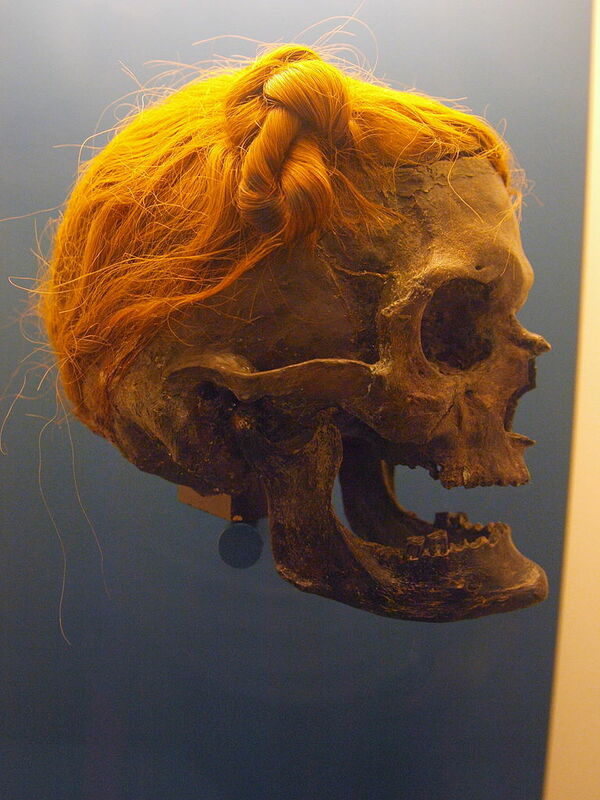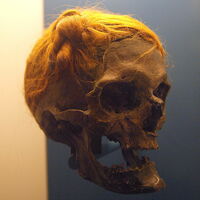Osterby Man
Type:
Skeletons and mummies
Date:
75–130 CE
Location or Findspot (Modern-Day Country):
Germany
Description:
Osterby Man is the name conventionally given to a skull with well-preserved reddish-blond hair found in a peat bog in 1948 and on display at the Archäologisches Landesmuseum in Gottorf Castle, Schleswig, Germany. The man died a violent death in his 50s: he was decapitated (his head was found wrapped in a deerskin cloak), and his left temple was shattered. The hair has been carbon-14–dated between ca. 75 and ca. 130 CE. It is braided and twisted in a distinctive form known as a Suebian knot, a hairstyle worn by the Suebi (or Suevi), a Roman name for a diverse group of Germanic-Celtic-Slavonic peoples in northern Europe who formed various alliances and disappeared in the sixth century. The Roman historian Tacitus (ca. 56–ca. 120) described the Suebian knot as something that made a man look taller and more impressive on the battlefield. It was a sign of status worn by free men, not slaves (Germania 38). The knot could be worn anywhere on the head; in some metopes from the Tropaeum Traiani at Adamclisi, Romania, it is visible on the front. Several other Roman and late antique works also depict the Suebian knot, including a bracteate from Funen, Denmark.
Relevant Textbook Chapter(s):
2
Image Credits:
Wikimedia Commons


